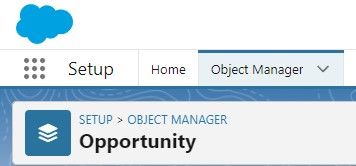
Salesforce Opportunity Analysis Using Reports and Dashboards
Welcome to our comprehensive guide on leveraging Salesforce Reports and Dashboards for in-depth opportunity analysis. In the competitive business landscape, understanding your sales opportunities is crucial for making informed decisions and driving growth. In this guide, we'll walk you through the process of creating powerful reports and interactive dashboards in Salesforce to gain valuable insights into your sales pipeline. Discover how to track sales performance, identify trends, and analyze key metrics to optimize your sales strategies. With Salesforce's robust reporting features, you can visualize data in various formats and uncover hidden opportunities that drive revenue and success.
1
Create a New Report
Create a new report using the opportunity report type.
2
Set Up Filters
Configure filters to display only the opportunities you're interested in, such as those assigned to you, your team, or within a specific date range. You can also filter by open deals, deal type, or deal value.
3
Add Columns
Add columns to your report, including opportunity name, amount, close date, and sales stage. You can also add any other columns you're interested in.
4
Group by Sales Stage
Group your report by sales stage to see deals at each stage of the sales process.
5
Summarize the Dollar Amount
Check the "Sum" option for the dollar amount column to display subtotals for each group in your report.
6
Run the Report
Run your report to see opportunities by stage, their total dollar amount, and the number of opportunities in each stage.
7
Add a Chart
1
Click the Chart icon
Click the chart icon at the top of the report.
2
Select Chart Type
Select a chart type, such as a bar chart or funnel chart.
3
Configure Accordingly
Choose whether to display the dollar amount or number of deals in each stage, and adjust any other settings as desired.
8
Save the Report
Save your report with a descriptive name and store it in a folder where the appropriate teams or groups can access it.
9
Add the Report to a Dashboard
1
Edit dashboard
Edit an existing dashboard
2
Add the report
Add the report as a component
3
Configure charts
Configure the chart settings, if needed.
4
Save
Save the dashboard update.
Congratulations on mastering the art of in-depth opportunity analysis with Salesforce Reports and Dashboards! You now have the tools to gain valuable insights into your sales pipeline and optimize your sales strategies for success. By creating powerful reports and interactive dashboards, you can visualize data in a meaningful way and make data-driven decisions with confidence. Continuously monitor key metrics and track sales performance to stay ahead in the competitive market. As you explore the various reporting features in Salesforce, remember to customize your dashboards to meet your specific business needs and share valuable insights with your team. Embrace the power of data and leverage Salesforce's reporting capabilities to unlock new opportunities, drive revenue growth, and achieve your business objectives. Thank you for joining us on this journey to harness the full potential of Salesforce for in-depth opportunity analysis. Happy analyzing!



